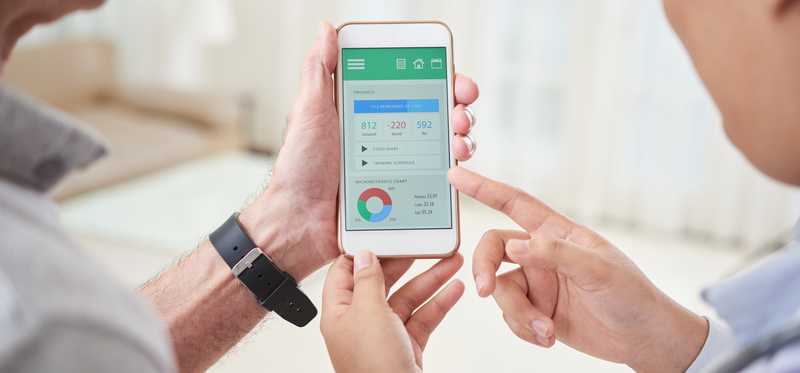10 Healthcare Trends Every Investor Should Pay Attention To

10 Healthcare Trends Every Investor Should Pay Attention To
Why you ought to be investing in healthcare stocks
Healthcare spending in the U.S. already tops $3.5 trillion per year, and according to the Centers for Medicare and Medicaid Services annual National Health Expenditures report, spending will grow by an average of 5.5% per year through 2027 to nearly $6 trillion. With so much money at stake, its little wonder why investors may want to own healthcare stocks in their portfolios. If you’re among those interested in investing in healthcare, then here are 10 emerging trends you ought to keep in mind.
Previous
Next

No. 1: Healthcare on every corner
There are still plenty of remote corners of America that are underserved by healthcare providers, including hospitals and doctors. However, it’s increasingly common to find an urgent care clinic or freestanding emergency room close by in heavily populated parts of the country. These corner store healthcare options are often opened by hospital systems, such as HCA (NYSE: HCA) because they boost visits, leading to referrals to specialists and tests. It’s not just hospital systems that are opening these stores, either. Pharmacy chains like CVS Health (NYSE: CVS) are also offering more healthcare services, such as flu shots, to boost foot traffic and prescription volume.
Previous
Next

No. 2: Your health record in your pocket
Crunching data to improve treatment decisions, reduce unnecessary tests and procedures, and spot health-related warning signs, is a huge opportunity in healthcare. Many industries are already leveraging analytical insight for improvements, but it’s been slow-going in healthcare because of antiquated record keeping, systems that don’t share information with one another easily, and privacy concerns. Fortunately, companies are trying to overcome those obstacles. For instance, Apple (NYSE: AAPL), in collaboration with major electronic health records companies, including Cerner (NASDAQ: CERN), offers a health information vault that allows people to easily share information with their doctor using their iPhone.
Previous
Next

No. 3: Personalized treatment
It took over a decade to sequence the first human genome, but it only takes a day or two nowadays thanks to innovation by companies like Illumina (NASDAQ: ILMN), the world’s largest manufacturer of gene sequencing machines.
Sequencing the genome quickly is leading to incredible advances in personalizing care, particularly in complicated indications, such as cancer. For example, doctors are increasingly prescribing genetic tests conducted by companies including Guardant Health (NYSE: GH) to determine what chemotherapy may work best in a patient based on their specific genetic makeup. As gene sequencing costs fall and genetic insight expands, it’s not a stretch to think genetic screening will become standard in cancer and other life-threatening indications.
Previous
Next

No. 4: The virtual visit
Americans are waking up to the idea they no longer must drag themselves or their children to a primary care doctor for a minor illness. Instead, they can do a virtual visit with a doctor using their smartphone or an internet-connected device, like a tablet. Virtual visits are a win for patients and healthcare providers because telemedicine provides patients with convenience while also helping doctors better manage their schedules and control their costs. Since Americans visit doctors about 1 billion times per year and insurance plans are increasingly including solutions offered by companies such as Teladoc (NASDAQ: TDOC) in their plans due to cost savings, this is a trend well worth watching.
Previous
Next

No. 5: Precision cancer care
Oncologists treat most cancers today based on where they originated, such as in the lung, breast, or kidney, but in the future, the focus is likely to be on the genetic mutations directly responsible for causing it. More precise targeting of cancer is already happening following the approval of Eli Lilly’s (NYSE: LLY) Vitrakvi in 2018. Unlike most treatments that win approval for use based on the cancer’s origin, Vitrakvi’s approval came after it proved it could help solid tumor cancer patients with a specific genetic makeup, regardless of the cancer’s location. More drugs directed at genetic targets are under development, suggesting approaches like this may be about to revolutionize the indication.
Previous
Next

No 6: Robotic surgery
It may sound like science fiction, but robots manufactured by Intuitive Surgical (NASDAQ: ISRG) have been helping surgeons perform minimally-invasive surgery for years because they can reduce complications and speed up recovery times. There are about 5,000 of Intuitive’s da Vinci robots installed at surgery centers globally, and in 2018 they were used in over 1 million procedures. Intuitive Surgical’s not stopping there, though. It’s researching how its robots can be used in even more procedures in the future. Intuitive Surgical undeniably has a big head start, but competitors, including the Johnson & Johnson-backed (NYSE: JNJ) Verb Surgical, are working on robotic surgery too, so investors will want to keep close tabs on its progress as well.
Previous
Next

No. 7: Automated medical devices
Insulin-dependent diabetics have traditionally relied on multiple daily fingers sticks and insulin injections to monitor and manage their disease; a burdensome regimen that often fails short of keeping patients within their desired blood glucose range. Fortunately, monitoring and managing diabetes is getting better. DexCom (NASDAQ: DXCM) and Abbott Labs (NYSE: ABT) market devices that continuously monitor and report blood sugar levels and medical device makers, including Insulet (NASDAQ: PODD), market pumps that deliver insulin at the push of a button.
Even better, Tandem Diabetes (NASDAQ: TNDM) launched a revolutionary new system that combines continuous monitoring with an insulin pump last year and similar devices that are approaching, including one from Insulet, could end the need for multiple daily finger sticks and injections forever.
Solutions like these aren’t limited to diabetes, either. For instance, Inspire Medical (NASDAQ: INSP) has developed an implantable medical device that addresses sleep apnea without the need to wear a mask, and Novocure (NASDAQ: NVCR) markets a wearable device that can help keep cancer cells from replicating in patients with a type of brain cancer. I suspect we’ll see even more innovation in other indications soon.
Previous
Next

No. 8: Home healthcare
Eventually, aging baby boomers are likely to require care at assisted-living centers and unfortunately, that kind of care averages about $4,000 per month, according to Genworth. That’s an eye-popping amount of money, but it pales in comparison to the over $8,000 per month that’s charged by nursing homes on average. Given the sky-high price of assisted living and nursing homes, seniors are likely to stick with lower-cost options, such as home healthcare, for as long as possible. Home healthcare is historically a fragmented market consisting of small, locally based companies, but larger operators are emerging, including Amedisys (NASDAQ: AMED), which has become one of the nation’s largest home healthcare providers in part by acquiring smaller players. The growing demand for home healthcare has also spawned services such as Care.com (NASDAQ: CRCM), which matches caregivers up with those needing a helping hand. With 10,000 baby boomers turning 65 every day, the runway ahead of this industry looks long.
Previous
Next

No. 9: Gene editing
There are over 6,000 genetic disorders affecting over 300 million people worldwide, according to Global Genes, and 95% of them lack an FDA-approved treatment option. That could be about to change. Researchers at Editas Medicine (NASDAQ: EDIT), Crispr Therapeutics (NASDAQ: CRSP), and others are working on next-generation treatments that can correct genetic defects by cutting away, repairing, or replacing faulty genetic code. Admittedly, these approaches are only in their infancy, so more work needs to be done to make sure they’re safe. Nevertheless, investors shouldn’t ignore this research because gene editing could be a game-changing technology.
Previous
Next

No. 10: Improving cost-consciousness
Healthcare costs are on track to account for an increasingly bigger chunk of our budget and that’s driving companies to come up with new approaches that can save people money. For example, GoodRx offers coupons and price comparisons to help people find the best local price for prescription medicines, and insurers, including UnitedHealth (NYSE: UNH), are rolling out tools that can help people save money on lab tests, X-rays, and other tests. Additionally, drugmakers, such as bluebird bio (NASDAQ: BLUE) are unveiling innovative pricing models that spread costs across multiple years to manage costs for expensive, next-generation gene therapies. The potential to solve a major pain point by developing solutions that help keep healthcare costs in check could be one of the most important trends for investors to keep an eye on, especially if cost-consciousness leads to changes in how the industry is regulated.
Todd Campbell owns shares of Apple, Bluebird Bio, DexCom, Intuitive Surgical, and Teladoc Health. The Motley Fool owns shares of and recommends Apple, Bluebird Bio, Editas Medicine, Guardant Health, Illumina, Inspire Medical Systems, Inc., Intuitive Surgical, NovoCure, and Teladoc Health. The Motley Fool owns shares of Care.com and CRISPR Therapeutics and has the following options: short January 2020 $155 calls on Apple, long January 2020 $150 calls on Apple, short January 2020 $155 calls on Apple, and long January 2020 $150 calls on Apple. The Motley Fool recommends Cerner, CVS Health, HCA Healthcare, Insulet, Johnson & Johnson, and UnitedHealth Group. The Motley Fool has a disclosure policy.
Previous
Next
Invest Smarter with The Motley Fool
Join Over Half a Million Premium Members Receiving…
- New Stock Picks Each Month
- Detailed Analysis of Companies
- Model Portfolios
- Live Streaming During Market Hours
- And Much More
READ MORE
HOW THE MOTLEY FOOL CAN HELP YOU
-
Premium Investing Guidance
Market beating stocks from our award-winning service
-
The Daily Upside Newsletter
Investment news and high-quality insights delivered straight to your inbox
-
Get Started Investing
You can do it. Successful investing in just a few steps
-
Win at Retirement
Secrets and strategies for the post-work life you want.
-
Find a Broker
Find the right brokerage account for you.
-
Listen to our Podcasts
Hear our experts take on stocks, the market, and how to invest.
Premium Investing Services
Invest better with The Motley Fool. Get stock recommendations, portfolio guidance, and more from The Motley Fool's premium services.